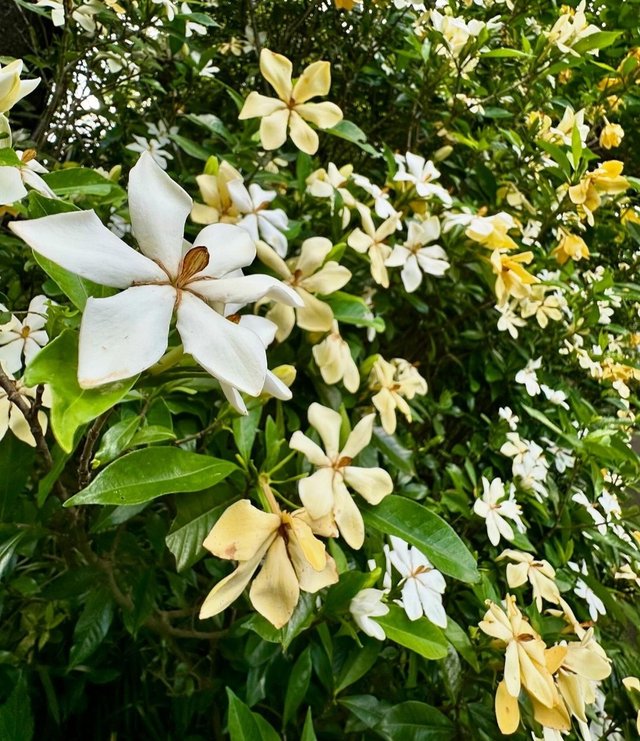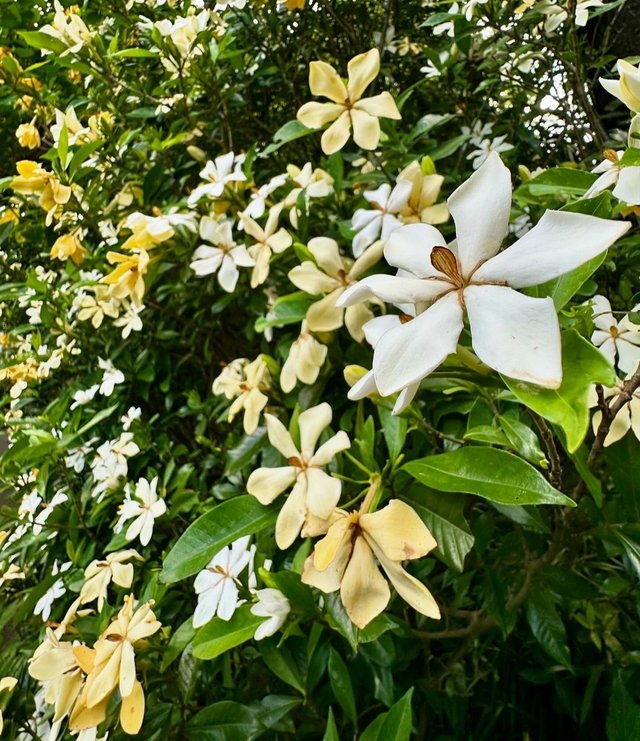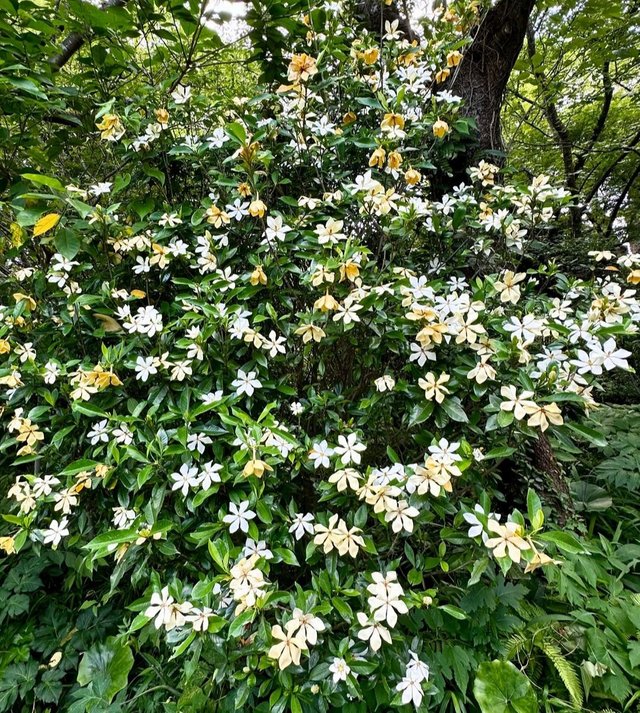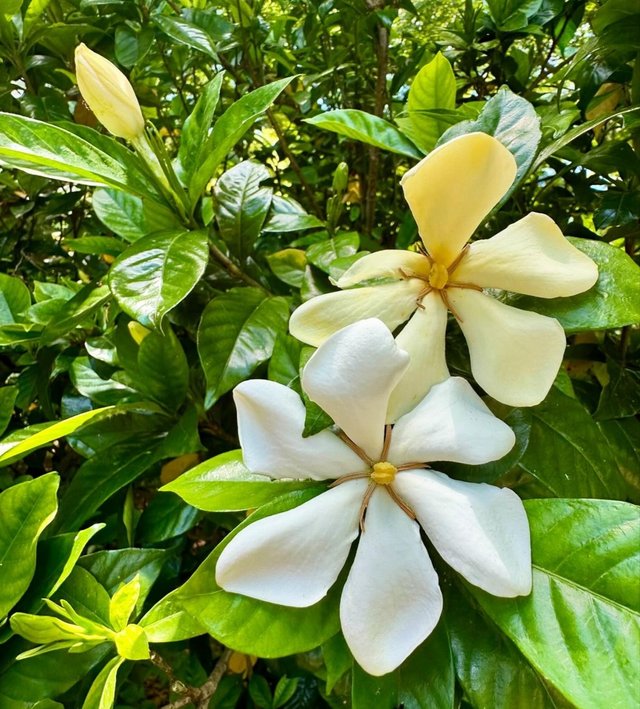White and Yellow Colour Cape Jasmine Flower
Cape jasmine, also known as Gardenia jasminoides, is a beloved evergreen shrub prized for its fragrant white flowers and glossy green leaves. Native to Asia, particularly China and Japan, this plant has become a popular choice for gardeners and indoor plant enthusiasts worldwide. Here's an in-depth look at this beautiful and aromatic plant.
Botanical Description
Appearance
Cape jasmine is an evergreen shrub that typically grows to a height of 3 to 6 feet, with a similar spread. Its leaves are dark green, glossy, and leathery, providing a beautiful contrast to the plant's white flowers. The leaves are usually between 2 to 4 inches long and arranged oppositely along the stems.
Flowers
The flowers of Cape jasmine are the plant's most striking feature. They are large, usually 2 to 4 inches in diameter, and have a creamy white color that can turn yellow as they age. The flowers are often double or semi-double, resembling roses, and are known for their intoxicating fragrance, which is most potent in the evening. Blooming typically occurs from late spring to early summer, though in some climates, gardenias can bloom sporadically throughout the year.
Fruit
After the flowers fade, they can be followed by small, oval-shaped fruit. These fruits are not typically ornamental and can be removed to promote further blooming.
Growing Conditions
Soil
Cape jasmine thrives in well-drained, acidic soil with a pH between 5.0 and 6.5. The soil should be rich in organic matter, and maintaining consistent moisture is crucial, as gardenias do not tolerate drought well. Mulching around the base of the plant can help retain soil moisture and regulate temperature.
Light
Gardenias prefer partial shade to full sun. In regions with hot summers, some afternoon shade can prevent the leaves from scorching and the flowers from wilting. However, too much shade can result in fewer blooms.




Thanks For Reading
Device Information
| Device | Redmi Note 10 Pro |
|---|---|
| Lens | 64 mp |
| Location | Bangladesh |
